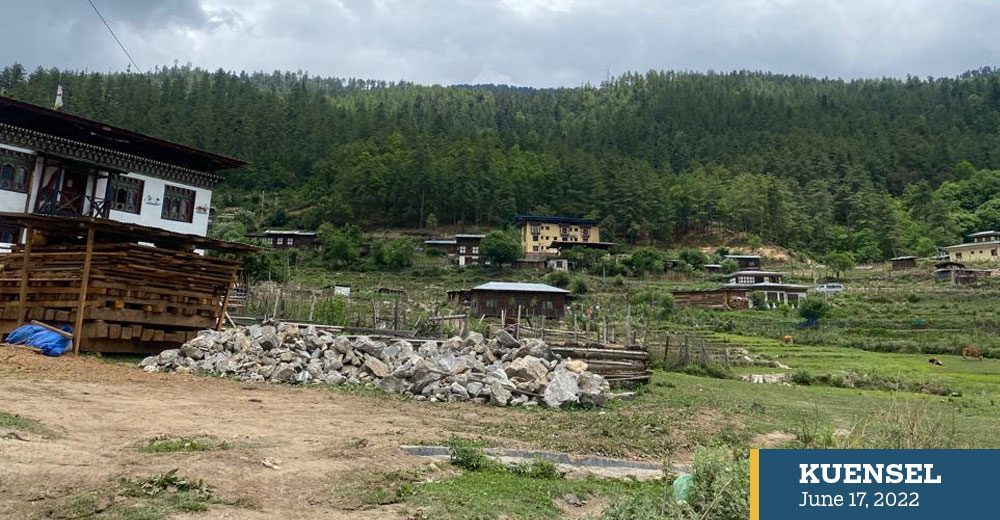Phub Dem
Kabisa is just a few minutes’ drive north from Thimphu Throm. The village, however, is still largely isolated.
Among the few concrete buildings are many hutments. Every few metres, in front of every house, timber and construction materials are piled.
Kabisa, according to locals, has been waiting for their Local Area Plan (LAP) for more than a decade. While waiting, many who were granted permission to construct temporary structures began building permanent structures.
Locals are frustrated with the construction moratorium, imposed in early 2016. Temporary prohibition of construction is costing the people in the area.
Lham said many were waiting for the finalisation of the LAP so that restrictions on the construction would be lifted, adding that locals had put on hold their plans to construct houses.
She said it is difficult to get approval for new roofing.
Another resident, Dorji, said that the restriction has an impact on felling timber for construction as households get a permit once every 25 years. “It has been ten years since the timbers were procured, and more than half is already damaged. We have to again wait for 15 more years to get a new timber permit.”
He said that selling timber is illegal. “People are concerned about renovation and building permanent houses on time.”
Lham added that the locals never wanted an urban facelift in Kabisa; those who bought land pushed for the LAP. “We have to face the brunt of other people’s choices.”
Tandin Zam is among many who had to postpone plans to build houses. The timber she got a few years is unusable now. “More than half of them are rotten.”
She said that human-wildlife conflict has increased in Kabisa due to the fallowing of land.
According to records with Thimphu dzongkhag administration, Kawang gewog, which includes Kabisa area, has the second-largest share of fallow land—33.45 acres of dry and 11.65 acres of wetland.
Though public consultations were completed by 2018, work progress was delayed due to issues related to the conversion of wetland to dry land.
Kawang Gup Dawa Tshering said that there are three LAPs in Kabisa but the issue was with LAP 1 where construction and renovation works were temporarily restricted.
The issue was raised during the recent Thimphu Dzongkhag Tshogdu.
Dawa Tshering said that no construction is allowed in LAP 1 and temporary constructions are allowed in LAP 2 and 3.
According to the DT resolution, Health Minister Dechen Wangmo, from North Thimphu constituency, said that representatives of the special committee and experts have been called to review the LAP and that the government’s plan is to complete the LAP this year.
According to Lyonpo, the Plan was delayed due to the pandemic, as experts could not come due to movement restrictions. “The public consultation will take place soon.”


